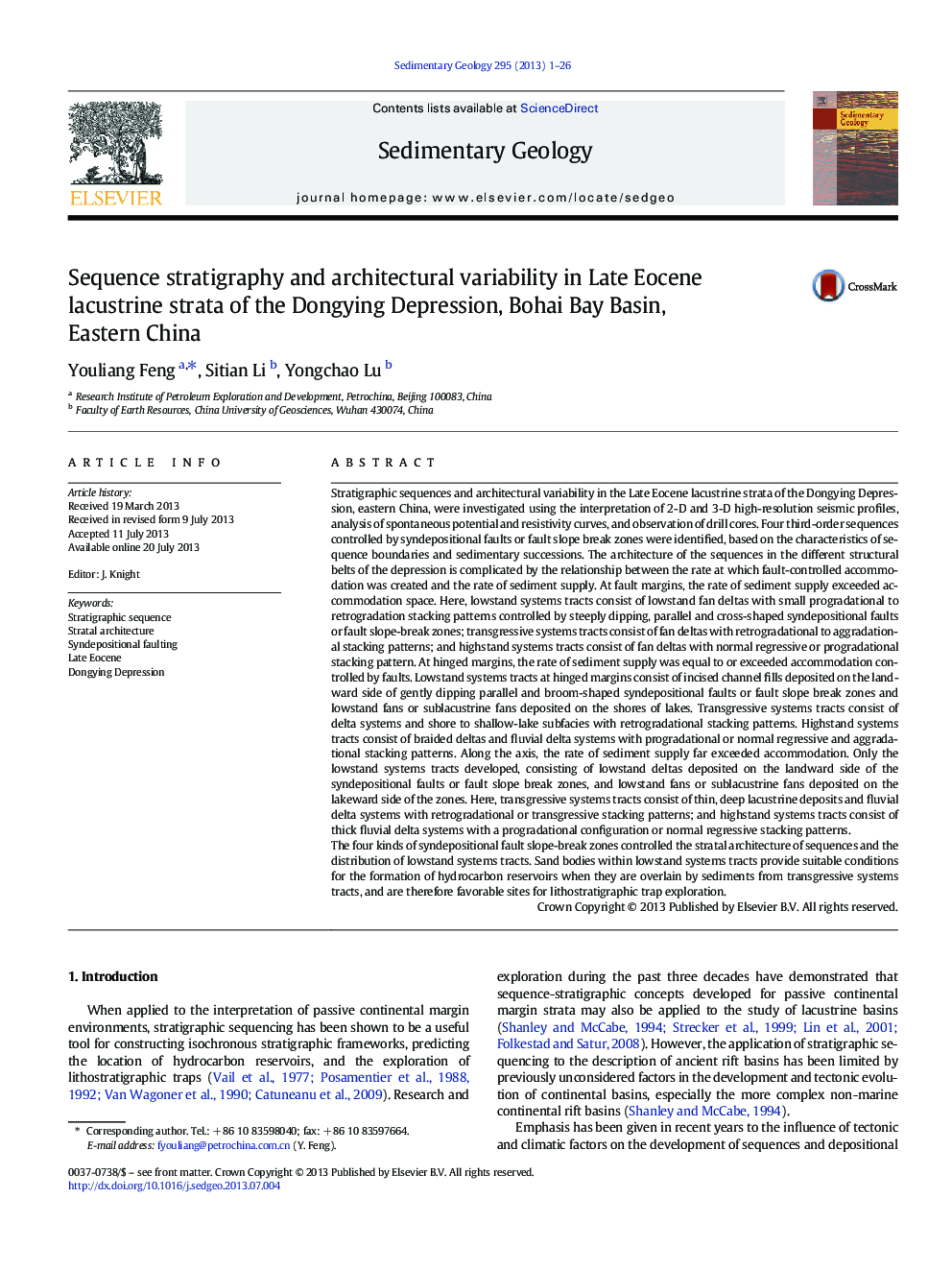| کد مقاله | کد نشریه | سال انتشار | مقاله انگلیسی | نسخه تمام متن |
|---|---|---|---|---|
| 4689499 | 1636068 | 2013 | 26 صفحه PDF | دانلود رایگان |

• Four third order sequences were identified in Late Eocene strata of the depression.
• Dominant sedimentary systems are discussed.
• A concept of syn-depositional fault slope-break zones is brought forward.
• Architectural variability of a sequence is discussed in detail.
Stratigraphic sequences and architectural variability in the Late Eocene lacustrine strata of the Dongying Depression, eastern China, were investigated using the interpretation of 2-D and 3-D high-resolution seismic profiles, analysis of spontaneous potential and resistivity curves, and observation of drill cores. Four third-order sequences controlled by syndepositional faults or fault slope break zones were identified, based on the characteristics of sequence boundaries and sedimentary successions. The architecture of the sequences in the different structural belts of the depression is complicated by the relationship between the rate at which fault-controlled accommodation was created and the rate of sediment supply. At fault margins, the rate of sediment supply exceeded accommodation space. Here, lowstand systems tracts consist of lowstand fan deltas with small progradational to retrogradation stacking patterns controlled by steeply dipping, parallel and cross-shaped syndepositional faults or fault slope-break zones; transgressive systems tracts consist of fan deltas with retrogradational to aggradational stacking patterns; and highstand systems tracts consist of fan deltas with normal regressive or progradational stacking pattern. At hinged margins, the rate of sediment supply was equal to or exceeded accommodation controlled by faults. Lowstand systems tracts at hinged margins consist of incised channel fills deposited on the landward side of gently dipping parallel and broom-shaped syndepositional faults or fault slope break zones and lowstand fans or sublacustrine fans deposited on the shores of lakes. Transgressive systems tracts consist of delta systems and shore to shallow-lake subfacies with retrogradational stacking patterns. Highstand systems tracts consist of braided deltas and fluvial delta systems with progradational or normal regressive and aggradational stacking patterns. Along the axis, the rate of sediment supply far exceeded accommodation. Only the lowstand systems tracts developed, consisting of lowstand deltas deposited on the landward side of the syndepositional faults or fault slope break zones, and lowstand fans or sublacustrine fans deposited on the lakeward side of the zones. Here, transgressive systems tracts consist of thin, deep lacustrine deposits and fluvial delta systems with retrogradational or transgressive stacking patterns; and highstand systems tracts consist of thick fluvial delta systems with a progradational configuration or normal regressive stacking patterns.The four kinds of syndepositional fault slope-break zones controlled the stratal architecture of sequences and the distribution of lowstand systems tracts. Sand bodies within lowstand systems tracts provide suitable conditions for the formation of hydrocarbon reservoirs when they are overlain by sediments from transgressive systems tracts, and are therefore favorable sites for lithostratigraphic trap exploration.
Journal: Sedimentary Geology - Volume 295, 15 September 2013, Pages 1–26